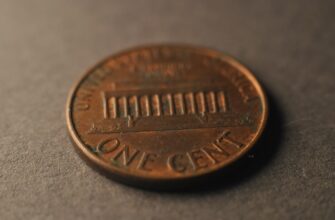In today’s digital age, protecting your cryptocurrency is non-negotiable. For beginners, the concept of “cold storage” might sound technical, but it’s simply the most secure way to safeguard your digital assets from hackers, malware, and online threats. This guide breaks down everything you need to know about cold storage in plain language – no jargon, just practical steps to keep your crypto investments safe.
## What is Cold Storage and Why Do You Need It?
Cold storage refers to keeping your cryptocurrency completely offline, disconnected from the internet. Unlike “hot wallets” (software wallets connected online), cold storage ensures hackers can’t access your funds remotely. Think of it as storing cash in a vault versus carrying it in your pocket. For beginners holding significant crypto, cold storage eliminates 99% of digital theft risks. Key benefits include:
– **Hacker-proof security**: No internet connection = no remote attacks
– **Malware immunity**: Protects against viruses and keyloggers
– **Long-term preservation**: Ideal for “HODLing” investments securely
– **Full control**: You own the keys – not an exchange or third party
## Types of Cold Storage Wallets Compared
### Hardware Wallets
Physical devices (like USB drives) that store keys offline. Examples: Ledger Nano, Trezor.
**Pros**:
– User-friendly with screens and buttons
– Supports thousands of cryptocurrencies
– Portable yet secure
**Cons**:
– Costs $50-$200
– Can be physically damaged or lost
### Paper Wallets
Printed QR codes containing public/private keys.
**Pros**:
– Free to create
– Completely offline
**Cons**:
– Vulnerable to fire/water damage
– Easy to misplace
– Requires technical know-how
### Metal Wallets
Engraved steel plates that preserve seed phrases.
**Pros**:
– Fire/water/corrosion resistant
– Lasts decades
**Cons**:
– Higher cost ($20-$100)
– Not for direct transactions
## Step-by-Step Setup Guide for Beginners
1. **Choose your wallet type**: Start with a hardware wallet for best security-ease balance
2. **Buy from official sources**: Only purchase directly from manufacturer websites
3. **Initialize offline**: Set up in a private room without internet access
4. **Generate recovery phrase**: Write down the 12-24 word backup seed *by hand* on paper
5. **Verify functionality**: Send a small test amount ($1-5 worth of crypto) then recover wallet using seed phrase
6. **Secure storage**: Place wallet and seed phrase in separate fireproof locations (e.g., home safe + bank deposit box)
## 7 Non-Negotiable Security Practices
– **Never digitize your seed phrase**: No photos, cloud storage, or email
– **Use passphrase protection**: Add a custom word to your recovery phrase (“25th word”)
– **Multi-location backups**: Store 2-3 copies of seed phrases in geographically separate secure spots
– **Silence is golden**: Never discuss holdings or storage methods publicly
– **Regular integrity checks**: Inspect physical storage annually for damage
– **Beware phishing scams**: Ignore “wallet recovery” emails/DMs
– **Update firmware**: For hardware wallets, install updates only from official sites
## 5 Costly Mistakes to Avoid
1. Storing seed phrases with wallet devices (defeats backup purpose)
2. Using free hardware wallets from unknown sellers (pre-tampered devices exist)
3. Creating paper wallets on public computers (keyloggers can steal keys)
4. Forgetting to test recovery process before transferring large amounts
5. Using obvious hiding spots (drawers, under mattresses)
## Cold Storage FAQ
**Q: Is cold storage necessary for small crypto amounts?**
A: For under $500, reputable hot wallets suffice. Above that threshold, cold storage becomes essential.
**Q: Can I still earn staking rewards in cold storage?**
A: Generally no – staking requires online connectivity. Use dedicated staking wallets for rewards and cold storage for bulk holdings.
**Q: What happens if my hardware wallet breaks?**
A: Your crypto is safe! Simply buy a new device and restore using your recovery phrase.
**Q: How often should I access my cold wallet?**
A: Only when moving funds. Frequent connections increase exposure risk.
**Q: Are metal wallets worth the cost?**
A: Absolutely for long-term holders. They survive disasters that destroy paper backups.
**Q: Can I recover crypto if I lose both wallet and seed phrase?**
A: No. The seed phrase is the ultimate key. Lose it = permanent fund loss.
## Final Security Checklist
Before transferring crypto to cold storage:
☑️ Recovery phrase handwritten (no printers)
☑️ Seed phrase copies stored in ≥2 secure locations
☑️ Wallet PIN memorized (never written with seed)
☑️ Test transaction completed successfully
☑️ All firmware updated
☑️ Emergency contacts informed of backup location access
Cold storage transforms crypto security from a vulnerability to a superpower. By following these beginner-friendly steps, you’ll achieve bank-level protection for your digital wealth. Remember: In crypto, you are your own bank – and cold storage is your vault.








